He’s a trainer of trainers and a sought-after coach. His clinics and private lessons have helped countless amateurs, youths, and rising pros achieve success in reining and cow horse events. And when top trainers in other performance disciplines want to compete on a cow horse, it’s Don Murphy they turn to for guidance.
[READ: 10 Things All Riders Should Do]
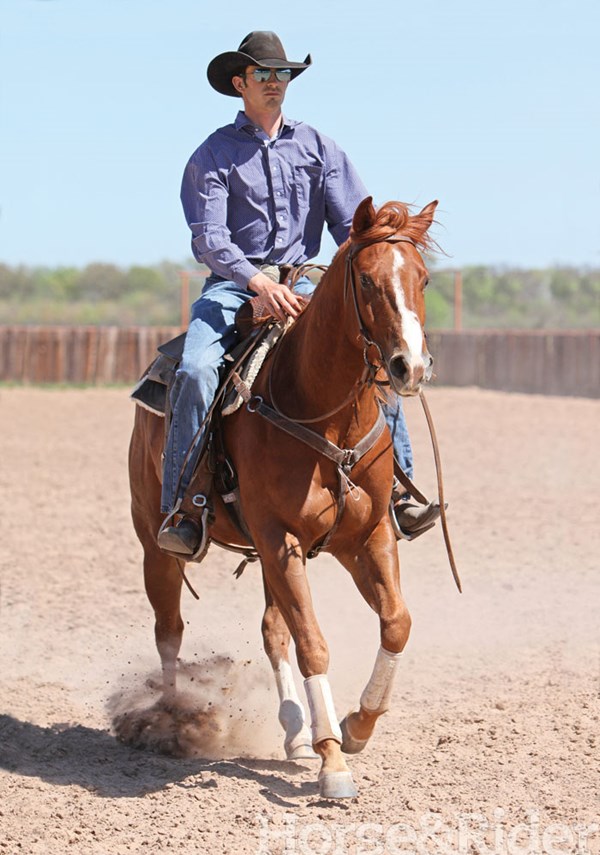
Here, we share some of the iconic horseman’s best advice, useful no matter what kind of riding you do. And, whether you’re a rookie or well advanced in your horsemanship, these concepts from a National Reined Cow Horse Association Hall of Famer will enable you to become a better rider—plus wind up with a better-broke horse.
Here are 10 key insights Don Murphy shared with us.
1. On preparing your horse’s mind for work.
Always get your horse ready to accept training before you start training on him. That means plenty of jogging and loping. Some horses need more than others. Work to develop a feel for what your horse needs.
Clues that he’s ready to settle in and work? When you put your leg on him and he’s responsive but his body doesn’t tighten up. He stays relaxed. You pick up the rein and he softens and remains quiet. He’s not looking out to the pasture at whatever’s going on. He’s thinking about what you want to do.
Depending on the horse, you may have to get him a little tired to achieve this, even to the point of noticing his breathing. You might have to jog and lope for some 30 minutes or so, until he lets down and truly relaxes.
Then, too, sometimes the best training program for the day is to go out and jog/lope around, and nothing more. Just let your horse work the kinks out. You have to learn to recognize what he needs on any given day.
2. On allowing time to respond.
Riders often don’t give their horses enough time to respond to the cue they’ve just given. Have you ever seen someone pushing an elevator call button repeatedly, as if this will bring the elevator faster? It happens on horses, too. I see riders pulling the reins or spurring repeatedly, even before the horse has had a chance to react to the first cue.
Try this Bob Avila Collection Snaffle Bit by Professional’s Choice, paired with these Teskey’s Weighted Heavy Oil Split Reins for great reactions. If you’re spur shopping, check out these Weaver Leather Ladies’ Spurs.
(As an Amazon Associate, we earn from qualifying purchases made through affiliate links.)
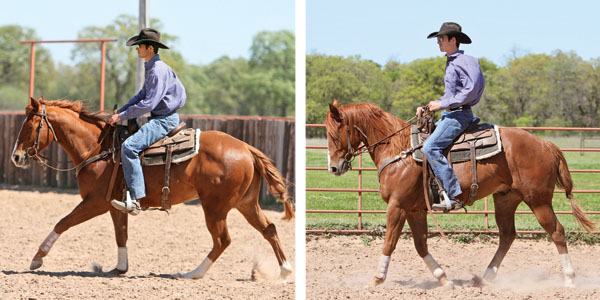
When you do this, you’re just teaching your horse to brace for a punishment when he feels a cue. This, in turn, can cause him to panic. Instead, follow this sequence: Cue your horse, give him a chance to respond, and only then decide what your next action is. You’ll have a much happier horse.
3. On practicing patience.
We live in a world of instant gratification, but with horses, small steps lead to big results over time. It’s easy to get frustrated because it feels as if your horse isn’t improving fast enough. Be patient! Expecting too much just creates additional issues you’ll have to fix on down the line.
When I start to feel frustrated, I go back to something I heard when I was young: “If you improve your horse 1 percent a day, then in 100 days you’ll have a 100-percent better horse.”
4. On ‘capturing’ his poll.
Horses can push on the bit using their strong neck muscles. You prevent this by “capturing” your horse’s poll. His poll must become “soft,” meaning he flexes vertically at the throatlatch when you pick up on the reins, and from side to side when you ask with each rein.
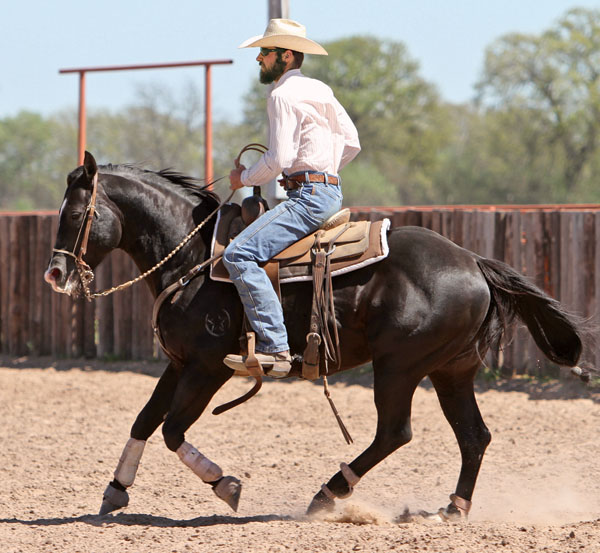
You should also be able to move all parts of him—including his hips, his shoulders—without having his head move around. Same with maneuvers such as a sidepass—you should be able to guide your horse in any direction while his neck stays straight and his poll softly flexed. (This isn’t easy to accomplish. Expert guidance helps.)
You don’t want your horse overflexed, however. When you pick up the reins, he should soften through his poll but not get rubbery, with his nose drawing in all the way to his chest. Every horse must be able to carry himself in a comfortable position that satisfies him as well as his rider. If he’s uncomfortable, he won’t work for you. So take the time it takes to train his muscles to enable a proper vertical flexion.
Ultimately, the connection you’re seeking is from the reins to his feet. That means that when you pick up on the reins and he softens at the poll, his feet come, too. The left rein is connected to the left hind foot, and the right rein to the right hind foot.
5. On working the horse you have.
If God made your horse a 68 and you try to make him a 74, you’ll wind up with a 62. You’ve got to work the horse you have. Your job is to get that maximum out of him, not to try to drive him to a level that’s out of his reach. I won more classes by showing what my horse could do, rather than trying to beat someone else’s score.
Remember, too, there’s a place for every horse in the world. If it turns out the “horse you have” doesn’t fit your program or personality, let him go someplace where he will fit. Sometimes it’s a good horse and a decent rider, but they just don’t match, and neither is to blame.
[READ: Time for an Upgrade]
6. On using feel with your reins.
Your hands can teach your horse to be heavy or light. Don’t over-pull. Encourage your horse to come off a softer pull by always using that softer pull first. Your legs can speed your horse up, but your hands can’t and shouldn’t even try. Your hands should never be faster than your horse’s feet can move.
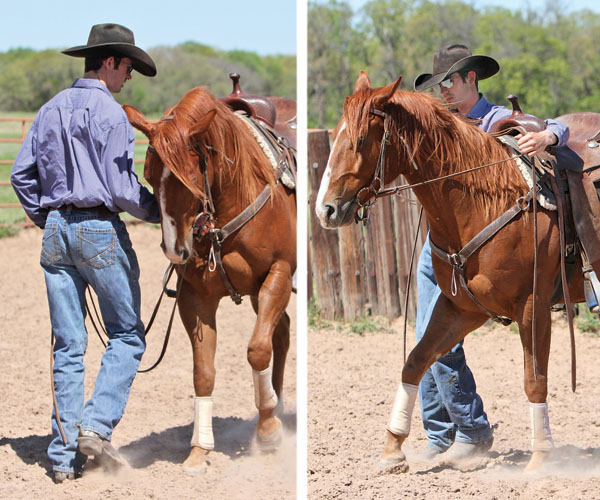
7. On keeping him guessing.
A horse that anticipates isn’t really cheating. He’s just trying to please you (and avoid getting pulled on) by beating you to what he thinks you want next. This comes from having done something the exact same way too many times. It’s variation in the sequence of things that keeps your horse from learning to anticipate.
For example, instead of over-practicing your stop, practice the rundown by itself more often. In other words, run down the center of the arena and turn at the fence instead of stopping. Vary which way you turn, and the speed at which you run. That way, your horse never knows for sure if you’ll be asking for a stop or a turn, so he has to listen for your cues.
Use this same strategy with all your schooling, to keep your horse guessing and therefore waiting for your cues.
[READ: Outsmart Anticipation]
8. On backing up—a lot.
Backing up isn’t natural for horses. You rarely see them doing it on their own, in nature. To compensate for this, I often back my colts around the ranch instead of leading them forward. That teaches them early how to release their feet backward. Different muscles are used for this, and plenty of practice helps develop the musculature needed.
So back your horse a lot, starting on the ground and continuing on a regular basis from the saddle.
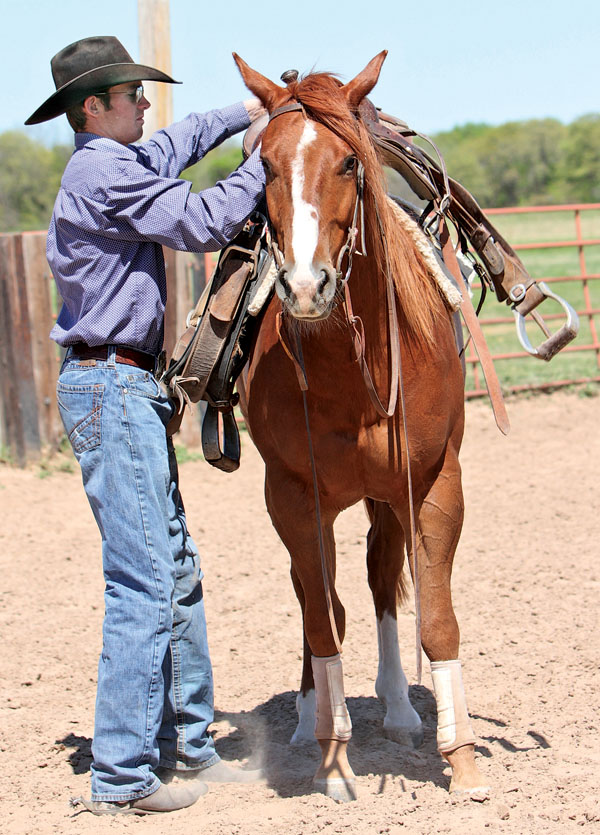
9. On working his tougher side.
You need both sides of your horse to be even. Horses tend to be left-sided. We make them this way by always handling them from the left. We halter and saddle them from the left, and pull them around from the left when leading them.
I counteract this by working from the right a lot. I cinch colts from both sides, for example, and in the round pen, I always direct a horse to the right first.
Be sure, also, not to fall into the trap of always working your horse on his “good side”—meaning the side he’s most flexible on, usually his left. Things go easier that way, so we tend to want to go in that direction, which just makes the horse more uneven. You’ve got to have balance in every part of your training program.
10. On pushing—just enough.
Knowing how much to push a horse is a learning process. All young trainers at times apply too much pressure before they learn how to truly read a horse. Pushing too hard creates resentment. The horse switches his tail, or flips his head in the air. Often it means the horse is missing something in his foundation. He’ll start “collapsing,” just as a building collapses if it’s missing a key part of its foundation.
[READ: Bob Avila’s Best Tip]

The solution is to go back and fill in or strengthen the weak or missing parts. Just continuing to push, by contrast, can ruin a horse.
It’s true that horses today are bred to take a little more pressure, but you have to be smart in how you apply it (once the foundation is secure). If your horse knows how to give his face, for example, then when you ask for it, he must respond (and then you give that instant rein release as a reward).
A timid rider might need to learn to be a bit more assertive, or the horse may never fully respond. A bolder rider might have to learn how to be more sensitive to properly calibrate the pushing. Ultimately, you only need a little bit from your horse every day, but you do need that little bit and it’s OK to ask for it.






